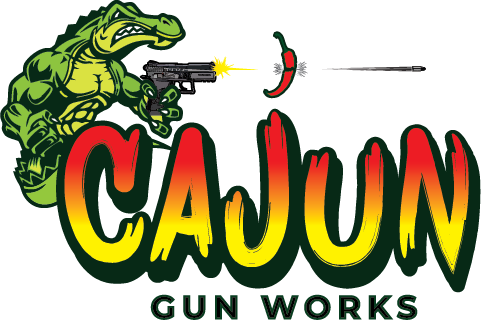How to Select the Proper Recoil Spring
The recoil spring is one of the most critical springs in a semi-auto pistol, yet most shooters install the wrong spring the vast majority of the time. To understand the recoil springs’ function, we need to examine what it does and how it works.
The recoil spring performs 5 tasks, all of which are critical for reliable function:
- Controls the velocity of the slide when cycling
- Allows the slide to achieve a full rearward stroke
- Ejects the spent case the correct distance from the ejection port
- Picks up and feeds the next cartridge
- Positively locks the slide into battery
Item #1: the optimal slide velocity will eject a spent case, on average, 6 – 8 feet away from the shooters stance. This is the ideal slide velocity for reliable extraction, ejection, and subsequent feeding. Pistols that eject a case 12 feet or more will prematurely break a slide stop, can produce excessive muzzle rise or lift, and can increase felt recoil. The majority of the time folks follow the bad advice given on YouTube videos and on the internet telling folks to use a 10 or 11# recoil spring, which is incorrect unless you are using very light loads.
Item #2: the slide must travel its full stroke so the slide abuts the frame, just as it was designed to do. There is no such thing as “slide or frame battering” and the installation of recoil spring buffers can prevent the slide from achieving its full stroke. Recoil buffers can cause ejection problems by short cycling the slide, plus when the buffer breaks, as they all eventually do, it will drop broken shards into your CZ’s lock work, rendering your pistol inoperative. A full slide stroke allows the spent case rim to contact the ejector with full force, producing a strong, long-distance ejection, a critical function for a reliably running pistol. Obviously, you can only determine the correct ejection outdoors, so if you only shoot indoors, you must find somewhere to do some testing.
Item #3: there are 2 criteria for determining the correct recoil spring poundage: an ejection distance of 6 – 8 feet, and for competition shooters, how quickly your muzzle gets back on target. Too heavy of a recoil spring can cause the muzzle to “dip”. Too light of a recoil spring can make the muzzle rise too much and puts added stress on the slide stop pin. Finding the optimal spring can be trial and error. The OEM recoil spring weight in a full-size 9mm CZ pistol is 17#’s, including the CZ-97 in .45 ACP. The compact 9mm metal framed CZ’s use a 16# recoil spring. The CZ P07 & P09 both use a 20# recoil spring. Each pound change in the recoil spring will change the ejection distance 1.5 – 2.0 feet. EXAMPLE: your out of the box SP-01 with a 16# recoil spring produces an ejection distance of 2.5 – 3.0 feet. To get this distance into the preferred 6 – 8 foot range, you would need to use either a 13# recoil spring (ejection distance would be 8.5 – 9.0 feet) or a 14# recoil spring (ejection distance would be 6.5 – 7.0 feet). Either would work fine.
Item #4: if your CZ has the correct recoil spring to match the pressure of your load, then mis-feeds, jams, and improper feeding are virtually eliminated. With the correct recoil spring installed, the main issue will be reduced to the magazines or the ammo. You DO NOT select the recoil spring based on bullet weight. You select the recoil spring based on the operating pressure of the load. A 115 grain bullet can produce a much higher operating pressure than a 124 or 147 grain bullet, with the powder charge being the determining factor. However, bullet weight can definitely affect operating pressure, if the same powder charge is used. The wrong recoil spring can produce double feeds, stove pipes, and angle jams where the slide has “crashed” into the case, pinching the cartridge. Very light recoil springs can result in failure for the slide to return fully into battery.
Item #5: since all semi-autos are reliant on quality ammo with the proper case crimp, sizing, and proper overall length, too light a recoil spring will allow a marginal cartridge to not fully chamber. However, in this instance, a marginal cartridge would have allowed the round to fully chamber with sufficient recoil spring poundage. It has been proven that too light a recoil spring can cause inconsistent lock-up, which can result in reduced accuracy. Remember, for any semi-auto to be accurate, the barrel must lock-up consistently, shot to shot. The correct recoil spring will ensure a positive lock-up.
As a side note, we get asked all the time, “if I change my recoil spring won’t I need to change my hammer spring”? Absolutely not. There is no relationship between the hammer and recoil spring. Let’s see why:
Some years back an enterprising individual mounted a motion sensor on a 1911 slide. With full power 45 ACP loads the slides total cycle time was 6 thousandths of a second. This means the time the slide made actual contact with the hammer was even less. Much less. In essence, you select your hammer spring for reliable ignition, first and foremost, then you tune your recoil spring last to match the pressure of your load.
